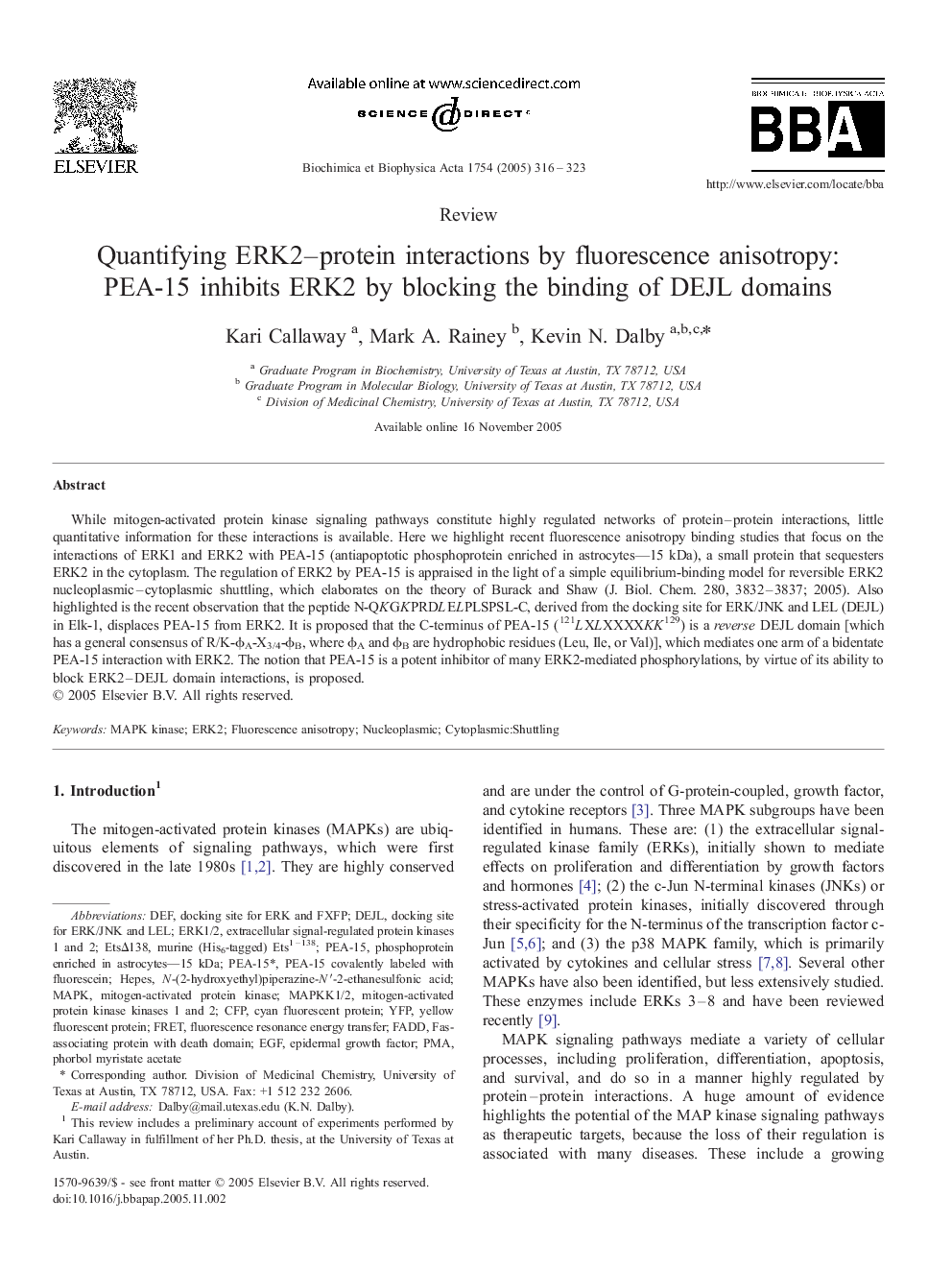| Article ID | Journal | Published Year | Pages | File Type |
|---|---|---|---|---|
| 9745100 | Biochimica et Biophysica Acta (BBA) - Proteins and Proteomics | 2005 | 8 Pages |
Abstract
While mitogen-activated protein kinase signaling pathways constitute highly regulated networks of protein-protein interactions, little quantitative information for these interactions is available. Here we highlight recent fluorescence anisotropy binding studies that focus on the interactions of ERK1 and ERK2 with PEA-15 (antiapoptotic phosphoprotein enriched in astrocytes-15 kDa), a small protein that sequesters ERK2 in the cytoplasm. The regulation of ERK2 by PEA-15 is appraised in the light of a simple equilibrium-binding model for reversible ERK2 nucleoplasmic-cytoplasmic shuttling, which elaborates on the theory of Burack and Shaw (J. Biol. Chem. 280, 3832-3837; 2005). Also highlighted is the recent observation that the peptide N-QKGKPRDLELPLSPSL-C, derived from the docking site for ERK/JNK and LEL (DEJL) in Elk-1, displaces PEA-15 from ERK2. It is proposed that the C-terminus of PEA-15 (121LXLXXXXKK129) is a reverse DEJL domain [which has a general consensus of R/K-ÏA-X3/4-ÏB, where ÏA and ÏB are hydrophobic residues (Leu, Ile, or Val)], which mediates one arm of a bidentate PEA-15 interaction with ERK2. The notion that PEA-15 is a potent inhibitor of many ERK2-mediated phosphorylations, by virtue of its ability to block ERK2-DEJL domain interactions, is proposed.
Keywords
EGFERK2YFPDEFFADDPEA-15FAS-associating protein with death domainCFPHEPESERK1/2PMAMAPKMAPK kinaseN-(2-Hydroxyethyl)piperazine-N′-2-ethanesulfonic acidFluorescence resonance energy transferFRETFluorescence anisotropyepidermal growth factorphorbol myristate acetateyellow fluorescent proteincyan fluorescent proteinextracellular signal-regulated protein kinases 1 and 2mitogen-activated protein kinase
Related Topics
Physical Sciences and Engineering
Chemistry
Analytical Chemistry
Authors
Kari Callaway, Mark A. Rainey, Kevin N. Dalby,
